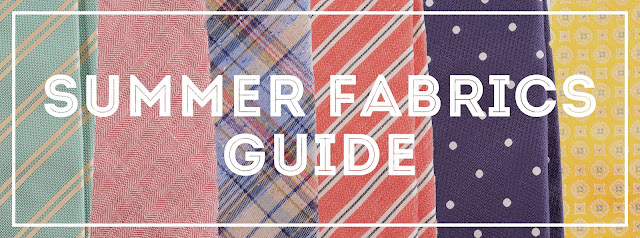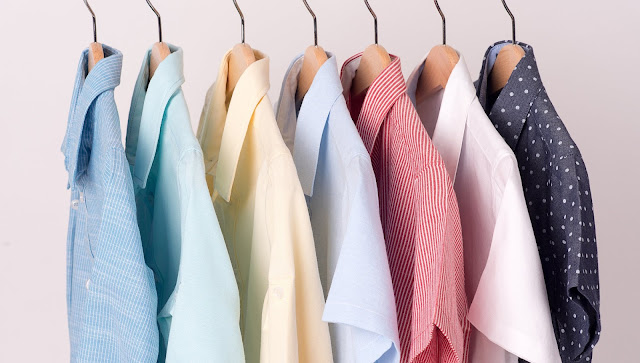Summer is here! And you're looking for breathable fabrics to stay sweat-free.
Well, summer is the best time to soak up every second on beaches and other seashore areas. Even it hosts some of your favorite events. But sometimes, it gets too tough to bear hot outside to enjoy the season. And the last thing you always worried about is sweating through your clothes.
However, wearing soft and breathable clothes can keep everything under control and further help in enjoying the great outdoors even during hot and humid weather.
Some people give preference to fully canvassed, double-faced wool suits year-round. But at peak times, their suits soak through pits. Clearly, if you are one of them, you require help from a men's custom suit tailor or custom tailor store to create airy, lightweight clothes for all purposes.
You might want to know more about breathable summer fabrics like - what to choose? And what to wear?
This guide will take you on the right path and help in knowing about the summer fabrics. So, let’s get started.
Table of Content
A Comprehensive Guide on Breathable Summer Fabrics!
What is Breathable Fabric?
What Should Be The Breathability Of Fabric
- Material Composition
- Density
Types and Properties of Breathable Fabrics
- Membrane Fabric
- Mesh fabric
- Greta
- Honeycomb
- Fleece
Advantages Of Breathable Fabrics
How to Care For Breathable Fabric
At Last!
What is Breathable Fabric?
Generally, breathable fabric is a material that is able to pass sufficient air through itself. Such fabrics are perfect for proper air exchange between the body and clothing.
What Should Be The Breathability Of Fabric
The ability of a fabric to let air pass through clothes refers to the most important characteristics of textile materials that determine the comfort of a future product.
The breathability of the fabric depends on the following parameters:
Material Composition
Natural fibers have the highest air permeability, while synthetics have a low air permeability. There are a number of breathable materials including linen, cotton, woolen, silk, nettle, and hemp fabrics, as well as rayon, lyocell cellulose, and bamboo.
Density
The density of the fabric affects breathability of the fabric. The denser the threads are in the structure of the material, the less it "breathes". So a mesh fabric made of synthetic fibers will allow air to pass through well. And dense drapes and very dense cotton fabrics have very low air permeability.
Types and Properties of Breathable Fabrics
The list of the main types of breathable materials:
Membrane Fabric
Breathable waterproof non-woven fabric! Depending on the structure, it can be with pores, without pores, and combined.
The pore membrane tissues ensure proper air circulation due to small holes on the surface, which are good at removing sweat from the body. The most durable pore-free membranes allow the body to breathe and remove excess moisture through diffusion. Combined membrane sheets combine the advantages of both types.
Mesh fabric
It is made from cotton, viscose, and polyester. Due to the special weave, it has a special structure with large gaps between the threads. Such fabric can be soft, very rigid, and shape-stable. It is used in finishing children's and women's clothing, when sewing concert costumes, etc.
Greta
Highly breathable cotton and polyester fabric. It differs in high characteristics of strength, which is widely used in sewing army uniforms and workwear.
Honeycomb
Breathable raincoat fabric made from polyester. It has a textured surface due to the twill weave of fibres in its structure. Soft, smooth, wrinkle-free material is well suited for sewing windbreakers, raincoats, and jackets.
Fleece
Short soft bristle fabric. It is made from polyester fibres. Due to the special manufacturing technology, the material is highly breathable. Fleece is used as a lining fabric.
The requirements for the air permeability of materials are formed depending on their purpose. Fabrics for winter and outerwear must have low air permeability and high wind-resistance properties in order to prevent hypothermia of the body.
Advantages Of Breathable Fabrics
Air permeability is one of the advantages of breathable materials. The comfort of clothing to wear directly depends on its degree. Moreover, each type of breathable fabric has its own advantages and disadvantages.
So, the advantages of a breathable membrane include its waterproofness, high strength, and resistance to dirt. Additionally, the list of the advantages of natural breathable materials is their Hypoallergenicity and pleasant tactile sensations.
The main advantages are determined by the composition of the fabric - wool keeps its shape well and retains heat, silk most effectively removes excess moisture, linen and cotton are highly durable, thermoregulatory, and comfortable to wear. Linen and cotton fabrics are widely used in sewing clothes for the summer. They do not impede air circulation and keep the body temperature cool well, which is especially important in summer. Membrane fabrics that do not wrinkle and breathe are widely used in workwear, sportswear, and outerwear.
How to Care For Breathable Fabric
Breathable clothes made of cotton, viscose and linen are well tolerated by both hand and machine wash at a water temperature not exceeding 40 ° C. For cotton and linen clothes, machine spinning at low drum speeds is allowed, and it is better to wring out viscose fabrics by hand. Dry them away from direct sunlight. Iron them slightly damp from the opposite side.
Woollen and silk items require careful maintenance. It is better to take such clothes to dry cleaning. Machine wash is allowed in a delicate mode without spinning and using special cleaning agents. To dry, it needs to be laid out on a horizontal surface.
Membrane fabrics must not be machine washed. They are cleaned with a soft sponge dipped in soapy water. In case of stubborn dirt, it is better to use dry cleaning services or wash clothes by hand at a water temperature not exceeding 30 ° C.
For washing membrane fabrics, only special gel-like detergents are used, since powder particles can clog the pores of the membrane, depriving the material of its moisture-repellent and breathable properties. After washing, dry the clothes vertically to allow the water to drain off. Dry away from heat and ironing is prohibited.
At Last!
With proper care, breathable fabrics retain their unique properties and flawless appearance for a long time. The fabric is capable enough to remove the excess moisture, which further helps to maintain proper hygiene, comfort, and skin health.
In order to choose the right fabric for bespoke shirts, you can take help from the suit tailor.
For example, the prices of the best suit alterations in Sydney are reasonable. So, consider every aspect and get ready to enjoy your summer vacation!


Comments
Post a Comment